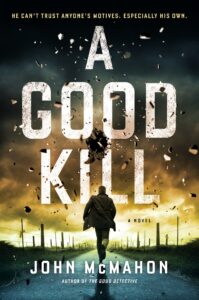I have a 17-year-old son, and over the past year, I have been teaching him to drive. He’s grown up in a different generation than me, one with Ubers and Lyfts. A lot of options on how to get around. And in my day job in advertising, I often hear that many twenty-somethings at the agency don’t even own cars… a move that suddenly seemed brilliant in 2020 amid the pandemic.
And so, my son asked me one day when he was first learning… “why do I need a car anyway?”
My answer was simple. Movement equals freedom. Freedom exposes you to new choices and experiences. And those experiences shape your identity. With a car, you can go places you’ve never gone—and meet people that you would otherwise never meet.
Driving shapes identity. And in turn, it becomes a sign of our identity. I drive a 2011 FJ Cruiser. I came to that car after a sporty Range Rover Evoque. I think at some point I realized that my brand wasn’t something new. It was an older truck with an eclectic shape, decent lines and yet unforeseen blind spots. Maybe that’s who I am.
But what about the cars that our fictional characters drive? And what can a vehicle do for a piece of fiction?
Are there archetypes in our mind for certain types of vehicles? And if so, by having our characters drive them, can a vehicle be as defining a characteristic as a mohawk or a regional accent?
I believe that the vehicles authors choose have the power to shape character and to shape a scene. My main character grew up in a rural area and drives a Chevy Silverado pickup. But when he’s chasing a lead or at the hottest point of his investigation, he often borrows his father-in-law’s 1972 Dodge Charger. It’s a car that speaks to the urgency that the scene demands.
In The Evil Men Do, P.T. and Remy stumble onto the missing piece in their investigation. They realize that an assassin is afoot in their own town, threatening a young girl. When they race to help her, there’s only one choice on what to drive: Marvin’s Charger.
In one of my favorite books, The Jealous Kind, by James Lee Burke, the author spins the story of Aaron Holland Broussard, a teenager growing up in 1950s Houston. Cars are used extensively throughout the book, and nearly always are a signal of class distinction, pitting the book’s protagonist against a series of bad men, from the wealthy elite to the mob.
Aaron’s best friend Saber Bledsoe drives a beaten-up 1936 Chevy, described often as “a heap.” Similarly, a character named Loren Nichols drives a 1941 Ford sprayed with primer. Aaron, a character who is caught between worlds, sides with the poor and the marginalized and spends much of his time in and out of the those used Chevys and Fords.
The true antagonists of The Jealous Kind, however, come from the wealthy side of Houston and drive “long-bodied” pink Caddie convertibles or Austin Healeys. And those who float between worlds sit behind the wheel of something up and coming, with a certain amount of style, decent muscle and growing heritage, like an Olds Rocket 88. The book is a study in using a vehicle to parse characters. Those with power, money, or control… have horsepower. The rest are left trying to manufacture it from their own wiles.
I have also found that a car can be used in other ways, to hint at elements of character that are still in development as a novel progresses.
In A Good Kill (out 6/15/21), my antagonist drives a mid-2000s Dodge Magnum. This was a masculine, boxy station wagon with a powerful Hemi engine, twenty inch wheels, and a firm suspension. It was billed as the “Dad wagon” we’d all been waiting for, except that the model came and went fast, its sales considered a dud.
Customers who loved the Magnum bought them right away, but most of the vehicles sat on car lots and Chrysler killed the car faster than you can say “zero to sixty.” The Magnum was functional, yet kludgy. It was confused as to its own identity. Purposeful, but unsexy… no matter how many horses were under the hood. But the point of all this is… if you read A Good Kill, knowing those details will reveal traits about the antagonist that you might otherwise wait a full book to discover.
Vehicles can be used in other ways, for fun set-ups and payoffs. In A Good Kill, P.T. and his father-in-law Marvin discuss whether P.T. is going through a mid-life crisis. “You stay two days on a lake and then get a dog?” Marvin asks. “You gonna buy a Porsche next?” In the following scene, P.T. is headed out for a late night (potentially illegal) search of an abandoned property. Marvin notices P.T. is dressed in black jeans and a dark hoodie. He asks “You robbin’ a bank or something?” P.T. just shrugs. “Porsches don’t come easy.”
So, I challenge everyone… in your next read—look out for that make and model. Or in your next book, if you’re a writer, use these details to drop subtle hints. There’s a lot of readers who are car experts. Trust me. I got a detail wrong about Marvin’s ’72 Charger and I’ve gotten no less than ten emails about it. Maybe in a second printing of The Good Detective, I can fix the problem.
My son is now fully-licensed and on the road. I swear that teaching him to drive took three years off my life. Put another way, if I’m still writing late in life, that’s two completed books that the world may never see. Worse than that, my daughter is currently studying for her permit test. Next driver up!
***


















